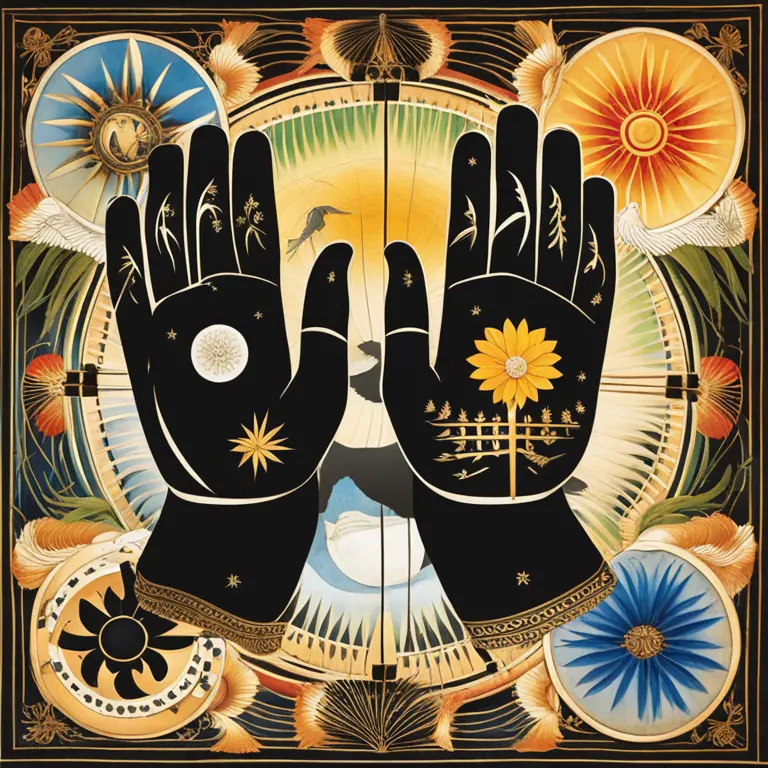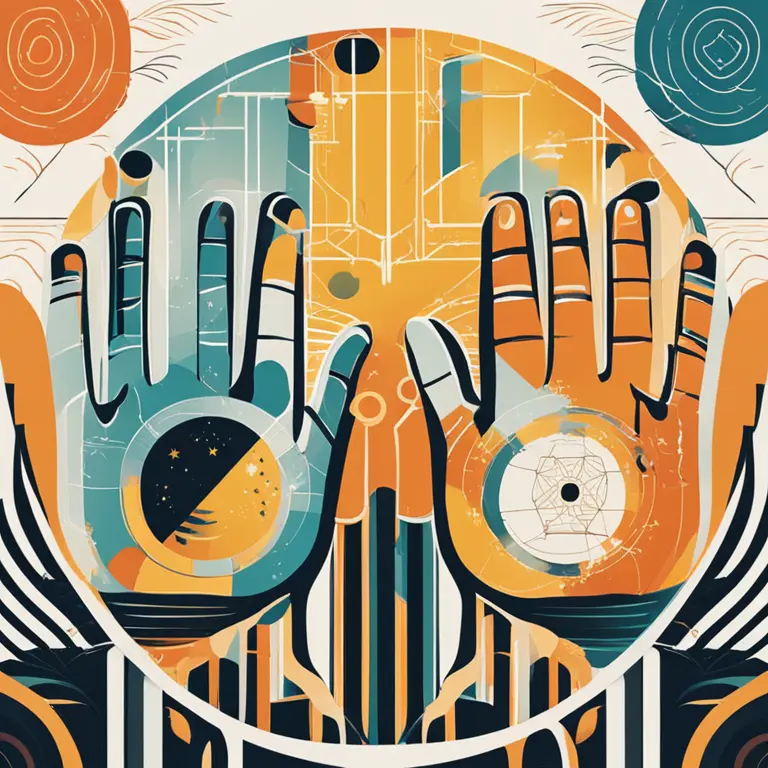
The Choice of Hands in Palmistry: Essential Insights
Delve into the mystique of palmistry and learn which hand holds the key to your life's secrets. This article unveils the nuances between right and left hands in the practice of palm reading.
article by Nora Pennington
Introduction to Palmistry
Palmistry, or chiromancy, has fascinated humankind for centuries, serving as a window to one's personality and destiny. Rooted in various cultural traditions, it involves the study of the palm's lines, shapes, and mounts to predict and analyze an individual's future and traits. But a common question arises for both practitioners and enthusiasts: which hand should be read? The answer is not as straightforward as one might think, and it requires us to delve deeper into the philosophy and methodology of palmistry.

Right Hand vs. Left Hand: The Dominant Hand
Traditionally, palmists consider the dominant hand, or the one a person uses most frequently, to be most telling of their current life, actions, and experiences. It reflects the conscious mind, active efforts, and the impact of external influences. The etchings of the dominant hand are believed to show the direction one's life has taken, including the results of individual choices and achievements, sort of like a constantly updating map.

Non-Dominant Hand: The Passive Hand
On the flip side, the non-dominant, or passive hand, is often said to reveal innate potential, character traits, and karmic challenges. This hand represents the subconscious mind, genetic inheritance, and latent abilities. Palmists view its patterns as a blueprint of one’s unaltered character and the possibilities that destiny holds, offering a glimpse into the traits and talents a person was born with.

The Influence of Different Palmistry Traditions
Cultural underpinnings and palmistry schools often dictate the chosen hand for readings. In Eastern traditions, the right hand is typically associated with males while the left with females. This perspective stems from the belief in different energetic qualities of each hand, relating to the Yin and Yang concepts. Conversely, Western palmists might encourage reading both hands for a more comprehensive understanding, arguing that this approach offers a complete narrative of one's life—past, present, and future.

Modern Adaptations in Palmistry
With the advent of new philosophies and understandings in the holistic community, contemporary palmists often advocate examining both hands. The dialogue between the two is seen as telling a richer, more detailed story. Changes in the dominant hand's lines over time are particularly poignant, as they are believed to reflect personal growth, life changes, and the evolution of one's mindset and experiences.
The Final Verdict: Which Hand to Read?
In conclusion, while the choice between the right and left hand may vary depending on cultural practices and individual palmists' approach, the consensus among modern practitioners leans towards a synthesis. Reading both hands can provide a multifaceted view of a person—combining the deep-seated nature from the non-dominant hand with the life path etched into the dominant hand. This tandem readout contributes to a well-rounded palmistic interpretation and empowers individuals with a more nuanced self-understanding.
Published: 1/11/2024
Modified: 1/12/2024
More predictions
Come back here soon to learn more about yourself and your future


Can Palmistry Predict Your Path Incorrectly?
Delving into the accuracy of palm readings, this article examines whether palmistry can lead to incorrect predictions about one's life and destiny.


The Possibility of Palmistry in Cancer Detection
Examining the claims that palmistry holds any potential in identifying the risk of cancer: a deep dive into the world of mysticism and medicine.


Palmistry Basics: How to Read Your Hand's Secrets
Learn the basics of palmistry with this guide on how to read the lines and shapes of your hands to reveal insights about your personality and future.